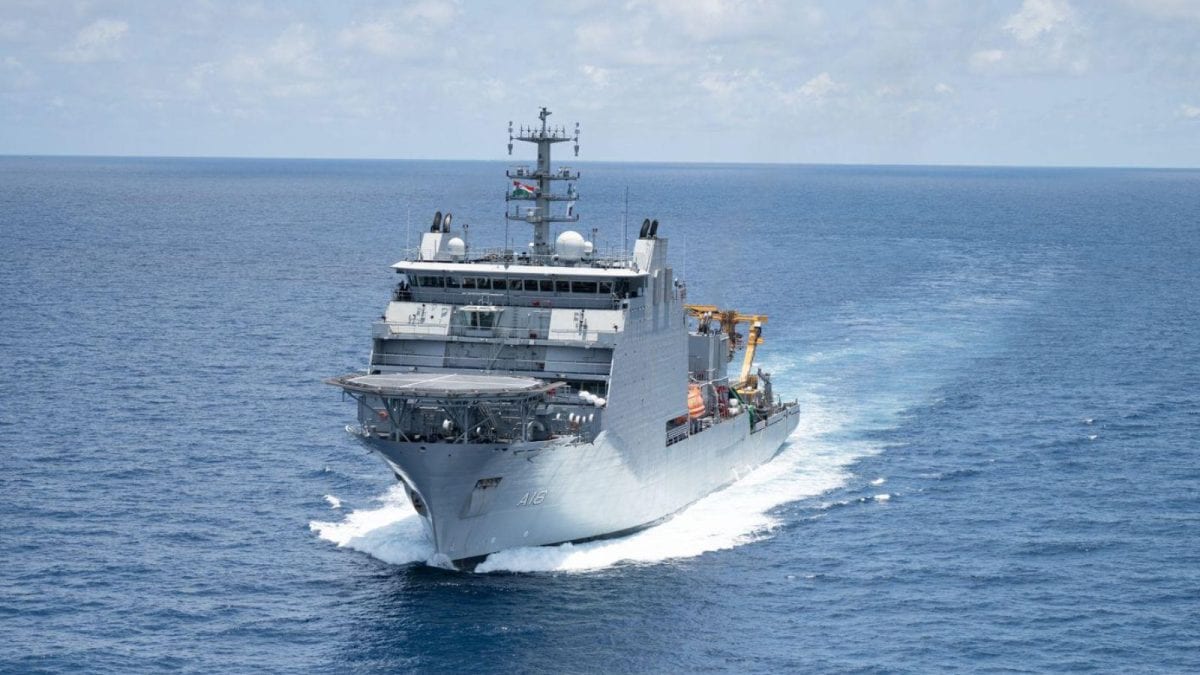Last Updated:
For the first time, India’s submarine rescue capability was tested beyond the Indian Ocean Region

Indian Navy ship INS Nistar departed Singapore after successfully participating in the multi-nation submarine rescue exercise | Image: X
The Indian Navy achieved a significant milestone in undersea operations with the successful overseas deployment of its Deep Submergence Rescue Vehicle (DSRV) Tiger X during the multinational submarine rescue exercise XPR-25, hosted by the Singapore Navy.
For the first time, India’s submarine rescue capability was tested beyond the Indian Ocean Region.
Recommended Stories
The DSRV executed a complete rescue drill in the South China Sea, docking with allied submarines under simulated emergency conditions.
Held from September 15–25, XPR-25 saw the participation of over 40 countries. The exercise unfolded in two stages — a shore phase (September 15–20) and a sea phase (September 21–25).
VIDEO | South China Sea: The Indian Navy’s Submarine Rescue Unit (East), embarked on INS Nistar, showcased precision and professionalism at XPR-25, hosted by the Republic of Singapore Navy (RSN). Over three successive days, the unit achieved three successful matings with… pic.twitter.com/HC17oeuycV— Press Trust of India (@PTI_News) October 1, 2025
During the sea phase, three submarine rescue units were deployed on their respective motherships — Singapore’s MV Swift Rescue, Japan’s JS Chiyoda, and India’s newly commissioned INS Nistar.
These units worked alongside submarines from South Korea, Japan, and Singapore, which simulated as disabled submarines (DISSUBs).
A landmark moment came on September 23 when Tiger X conducted its first dive outside Indian waters.
The mini-sub first mated with South Korea’s Shin Dol-Seok (S-082) and later with Singapore’s RSS Invincible, completing two successful docking operations in a single mission.
India’s DSRV Capability
India currently operates two DSRVs, procured in 2016 from UK-based James Fisher Defence under a £193 million contract.
Each system includes a rescue submersible, launch and recovery gear, Transfer Under Pressure (TUP) facilities, and long-term logistics support, with a 25-year maintenance guarantee.
The TUP system allows safe transfer of personnel between pressurised compartments, such as a submarine and a hyperbaric chamber, without risking decompression sickness — a critical feature in deep-sea rescue operations.
INS Nistar: First Operational Deployment
The exercise also marked the first operational outing of INS Nistar, India’s indigenously built Diving Support Vessel (DSV).
Commissioned on July 18, the 118-metre vessel was constructed by Hindustan Shipyard Limited (HSL).
Ordered in 2018 but delayed due to the COVID-19 pandemic, Nistar and her sister ship were launched in 2022.
Delivered to the Navy on July 8, Nistar has been placed under the Eastern Naval Command in Visakhapatnam, which oversees India’s nuclear submarine fleet.
With a displacement of over 10,000 tonnes, a 23-metre beam, and endurance exceeding 60 days, Nistar is purpose-built as a DSRV mothership.
It is equipped with a 15-ton subsea crane, diving bell, remotely operated vehicles (ROVs), side-scan sonar, compression chambers, and a Self-Propelled Hyperbaric Life Boat.
The vessel also features a forward flight deck for helicopter operations.
October 01, 2025, 19:44 IST
Loading comments…
Read More


